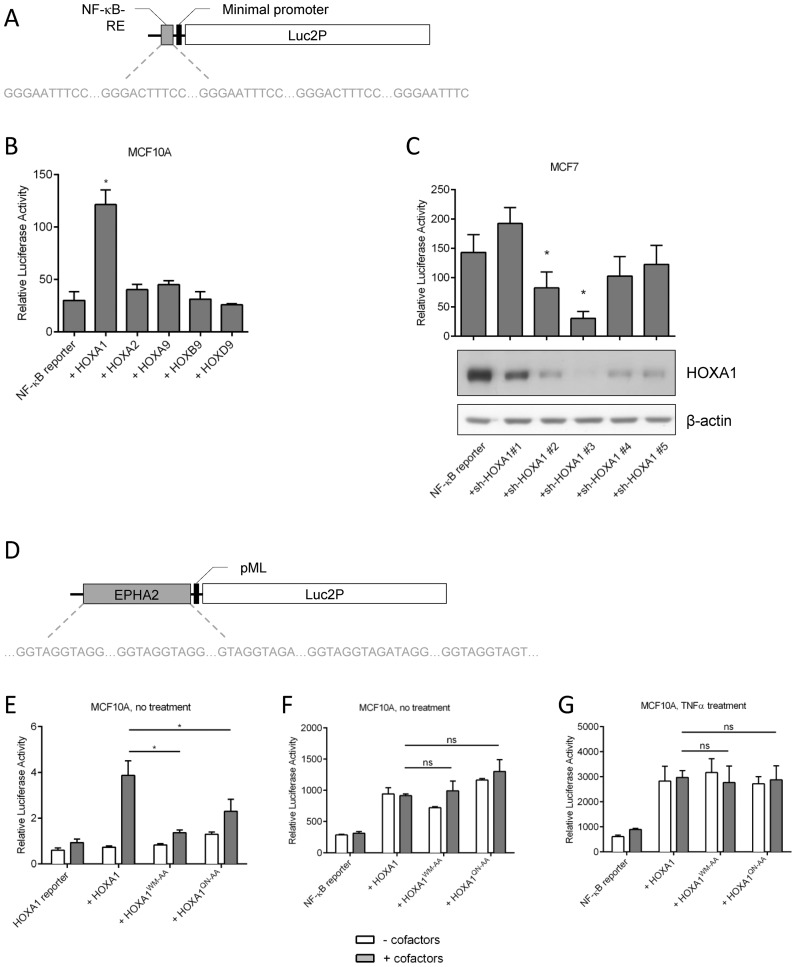Figure 2.
Transactivation assays on both NF-κB- and HOXA1-responsive reporters. (A) The NF-κB reporter (PGL4.32[luc2P/NF-κB-RE/Hygro]) consists in a luciferase reporter gene Luc2P controlled by five copies of a 10-nt NF-κB responsive element corresponding to p65 binding sites (GGGAATTTCC or GGGACTTTCC). (B) The specificity of HOXA1 in activating the TNF/NF-κB pathway was assessed using the NF-κB reporter and HOXA1, HOXA2, HOXA9, HOXB9 and HOXD9 expression plasmids in the human mammary epithelial cell line MCF10A. (C) The involvement of HOXA1 in NF-κB activation was assessed in a loss-of-function model by using sh-RNAs directed against HOXA1 in human breast cancer MCF7 cells. The HOXA1 protein level was analyzed by western blot, and the NF-κB activity was quantified by reporter Luciferase assay. (D) The HOXA1 reporter (pML-EPHA2-r4-luc) consists in a luciferase reporter gene Luc2P controlled by 5 HOX-PBX binding sites defining the EPHA2 gene r4 enhancer (40). (E) The ability of HOXA1 to activate the HOXA1 reporter was assessed in MCF10A cells. As controls, transcriptionally inactive HOXA1WM-AA and HOXA1QN-AA mutant proteins were tested. Expression plasmids encoding HOXA1 (wild-type, HOXA1WM-AA or HOXA1QN-AA) were transfected with or without expression plasmids for the TALE cofactors PREP1 and PBX1. (F) Reporter assays performed in MCF10A cells using the NF-κB reporter reveal that transcriptionally inactive HOXA1 variants (HOXA1WM-AA, HOXA1QN-AA) are able to stimulate NF-κB activity. (G) Similar experiments as in (F) were performed in MCF10A cells with TNFα addition (25 ng/ml for 24 h). Results are presented as a luciferase/β-galactosidase ratio (relative luciferase activity) and correspond to the means of three biologically independent duplicates ± SEM. Statistical analysis was performed (B and C) with reference to the condition involving the NF-κB reporter alone (NF-κB reporter) as control or (E-G) with comparisons between groups (*P < 0.0001; ns = not significant).

